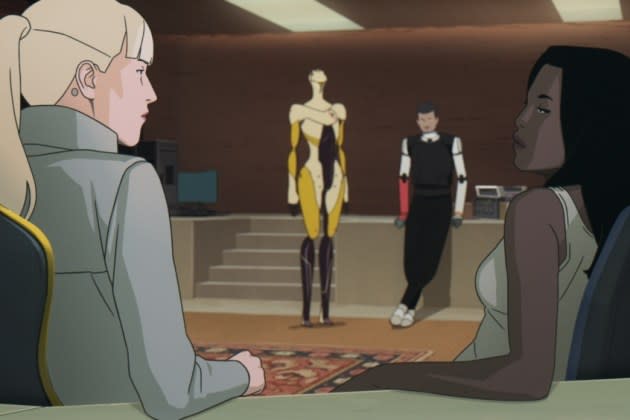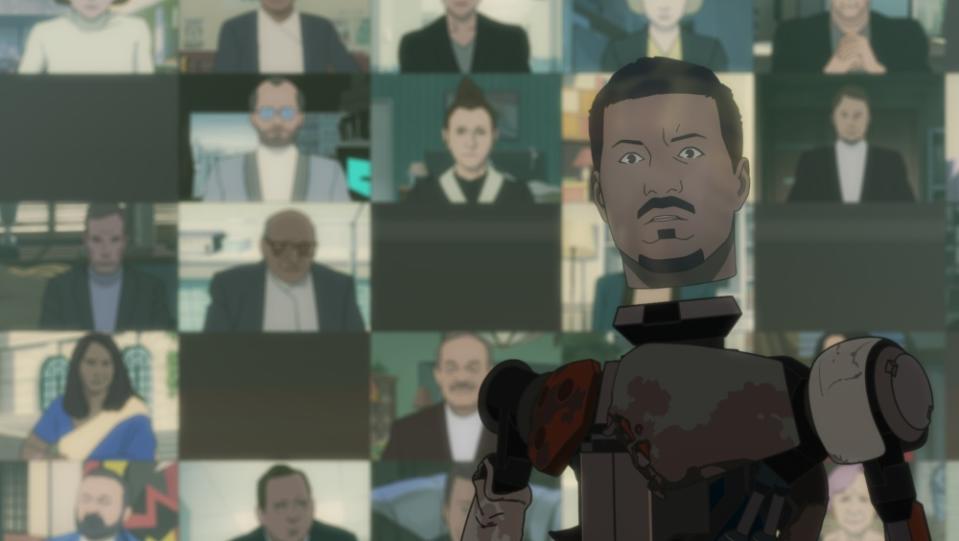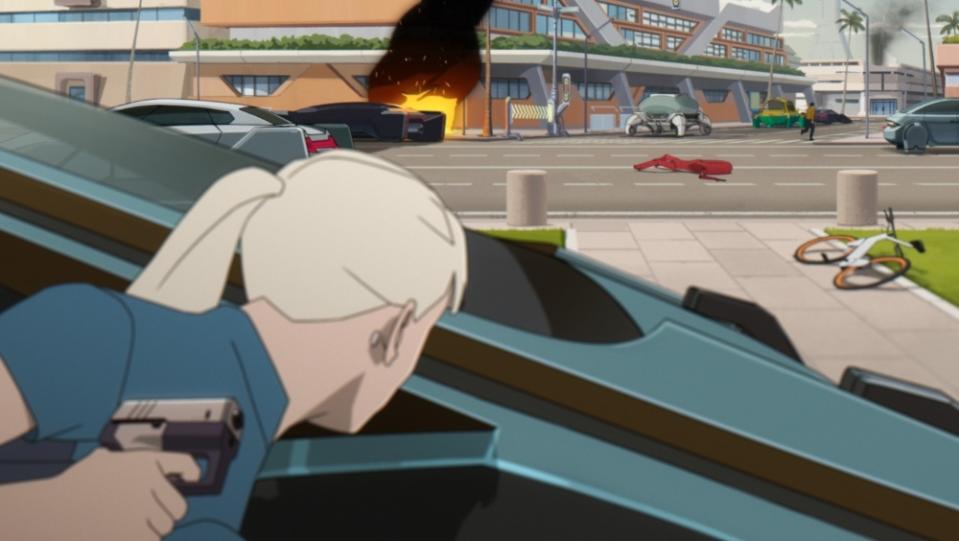‘Mars Express’ Director Jérémie Périn Mixes Mature Themes With Anime Influences in Noirish Sci-Fi Thriller

Playing in competition in Annecy after premiering in Cannes, Jérémie Périn’s sci-fi thriller “Mars Express” offers an uncommon spin on modern anxieties — particularly when it comes to AI.
“We so often imagine that if robots became sentient, they’ll kill us,” Périn tells Variety. “Or we see many sci-fi films where robots want to become human. In short, humans are always the point of reference – so mysterious and strange and interesting, such an amazing species. We’re a bit pretentious, and I didn’t want to play on that.”
More from Variety
Written by Périn and Laurent Sarfati, “Mars Express” serves a heady pop-culture cocktail, mixing hard-boiled fiction with science-fantasy comix, riffing on Philip Marlow and Philip K. Dick (with winks to “Watchmen” and “Robocop” and oh so many more) with a mystery yarn that places humans and cyborgs on equal footing.
“The film says robots and human are different, so we have to accept those differences. There’s no need for fear, no need for opposition. I feel like I’m singing ‘We Are The World,’” the director laughs.
Not that “Mars Express” is such a gentle ride. Beyond the plot twists and action thrills that are common to the genre, the space noir throws a number of spikes into a missing-person case that follows a pair of hired eyes from Earth to Mars to the cosmos while leaving behind a growing body count. To wit, while human Aline (Léa Drucker) struggles with alcoholism, her cyborg-bearing-the-consciousness-of-a-dead-man partner Carlos (Daniel Njo Lobé) cannot rebuild the broken family his namesake left behind.

“I wanted to do something a bit more mature, but without being unnecessarily violent or graphic,” Périn explains. “Selfishly, I asked myself what I wanted to see, and those questions led to this type of storytelling with more adult subjects and aesthetic expressions, but not ‘adult’ in the sense of throwing sex and super violence in every direction.”
“This is a world where the robots look ever-more human, and the human characters can access computer interfaces with their eyes,” the director continues. “So I wanted to embed this confrontation between ‘natural’ and ‘artificial’ within the very mise-en-scene, to blur those codes by mixing in the rules and conventions of live action.”
To translate those impulses into animation, Périn adhered to a live-action visual language, recreating split diopter shots, allowing liquid to drip down the ‘lens,’ and staging shots with wide depths of field and visual distortions in order to play into larger thematic concerns.
When thinking about this sci-fi landscape, Périn drew as much inspiration from Brian De Palma’s work as from the touchstone adult-skewing films from Mamoru Oshii, Satoshi Kon, Yoshiaki Kawajiri, and Rintaro. If anything, Périn saw clear continuity between both forms.
“Japanese animators brought staging and framing into the mix,” says Périn.
“Historically, to compensate for more limited budgets, the Japanese opted for a slightly more limited animation style, instead focusing on the layout of their shots, creating impactful images that needed less movement to be striking. They accented camera work, made changes in focus and depth of field, tilted the frames and introduced superzooms, [and by doing so] gave world animation greater vocabulary.”
Of course, by way of continuity, the “Mars Express” director sees his film as part of a pop-culture continuum that dates further back than 1988’s “Akira.”
“All those filmmakers were themselves nourished by the particular sci-fi culture that sprung from ‘Heavy Metal’ magazine,” Périn says. “I see the flow from Moebius to Katsuhiro Otomo. They both influenced me, and they in turn looked to earlier aesthetics from other countries, before contributing their own cultural versions of these worlds.”

Best of Variety
Sign up for Variety’s Newsletter. For the latest news, follow us on Facebook, Twitter, and Instagram.


